Often called “wild leeks,” ramps are delicate, cool-weather vegetables similar to chives or onions. This ephemeral plant is easily over-foraged, which has led to ramp patches – including a few in this area – becoming closely guarded secrets.
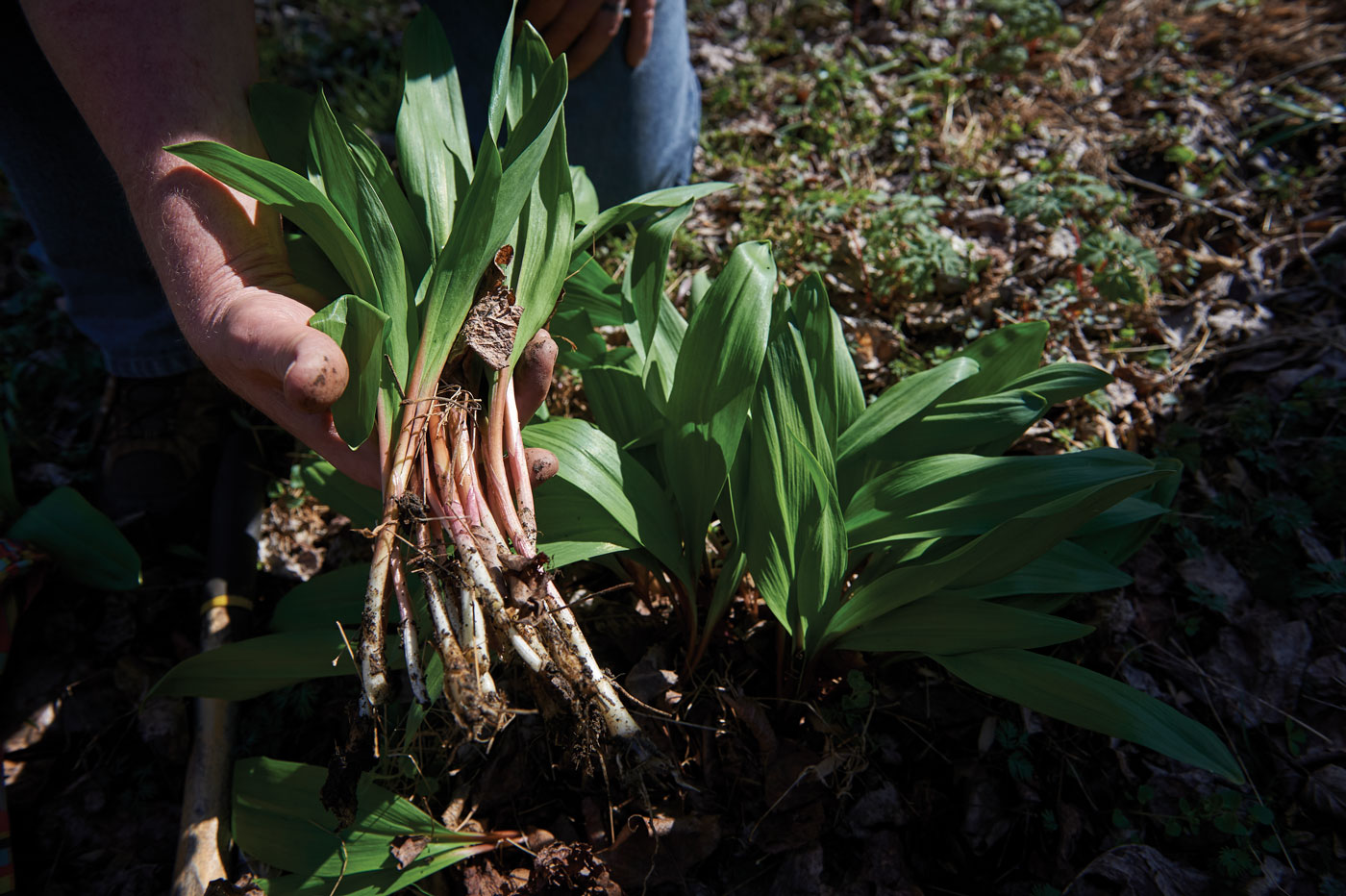
Harvested ramps showcasing white bulbs and green leaves. Wild ramps propagate through the division of bulbs and through seeds produced in the fall.
In the past, only one “outsider” was granted the opportunity to visit a well-guarded ramp patch that is harvested by Jim Switzenberg, the owner and executive chef at the John Wright Restaurant. To my delight, I became the second. While I was granted permission to bring a camera to the location, like the person who visited before me, I was required to wear a blindfold and turn off my cell phone so that I could not identify the route we took to get there or pinpoint its exact location. I must admit, the CIA-like maneuvers were well worth it. Upon arriving, I was introduced to the mother lode of ramp patches!
Community-to-Table
If you grew up going to mountainous destinations such as Wellsboro and Coudersport in Tioga and Potter counties respectively, you may have noticed local fire companies advertising ham-and-leek dinners. Growing in cool weather, ramps (Allium tricoccum) are bulbed vegetables with flavor characteristics adjacent to onions, chives, scallions or larger, cultivated broadleaf leeks. In such places, ramp-digging is a pastime, while the aforementioned dinners are held to celebrate the arrival of spring and benefit local fire companies and other organizations throughout the Appalachians. West Virginia appears to be the epicenter of dinners and festivals that are dedicated to ramps.

John Wright Restaurant’s owner and executive chef, Jim Switzenberg, with his dog, Zeke, ahead of their first foraging trip of 2022. Jim reports that Zeke knowingly anticipates harvest time, as it allows him to explore the myriad of scents and curiosities of the ramp patch.
Searching for ramp sources closer to home (Lancaster and York counties are about as far to the east as they grow), I came across an Etsy “store” that listed ramp oil for sale by WrightsvilleFoods. Knowing the John Wright Restaurant offered ramps for sale and infused menu items with them in the spring, I thought there must surely be a connection. It also occurred to me that for a restaurant to procure the number of ramps that would be needed for such purposes, they would need access to the mother lode of ramp patches.
As it turns out, WrightsvilleFoods is a part of John Wright Restaurant’s efforts to diversify revenue streams for greater stability. John Wright Restaurant is also home to The Real Food Emporium, which is stocked with an ever-changing selection of unique take-out items and cooking ingredients. The new operations were launched to fulfill a need during the pandemic. “We never want to be in a position where we can’t take care of our employees,” Jim explains.
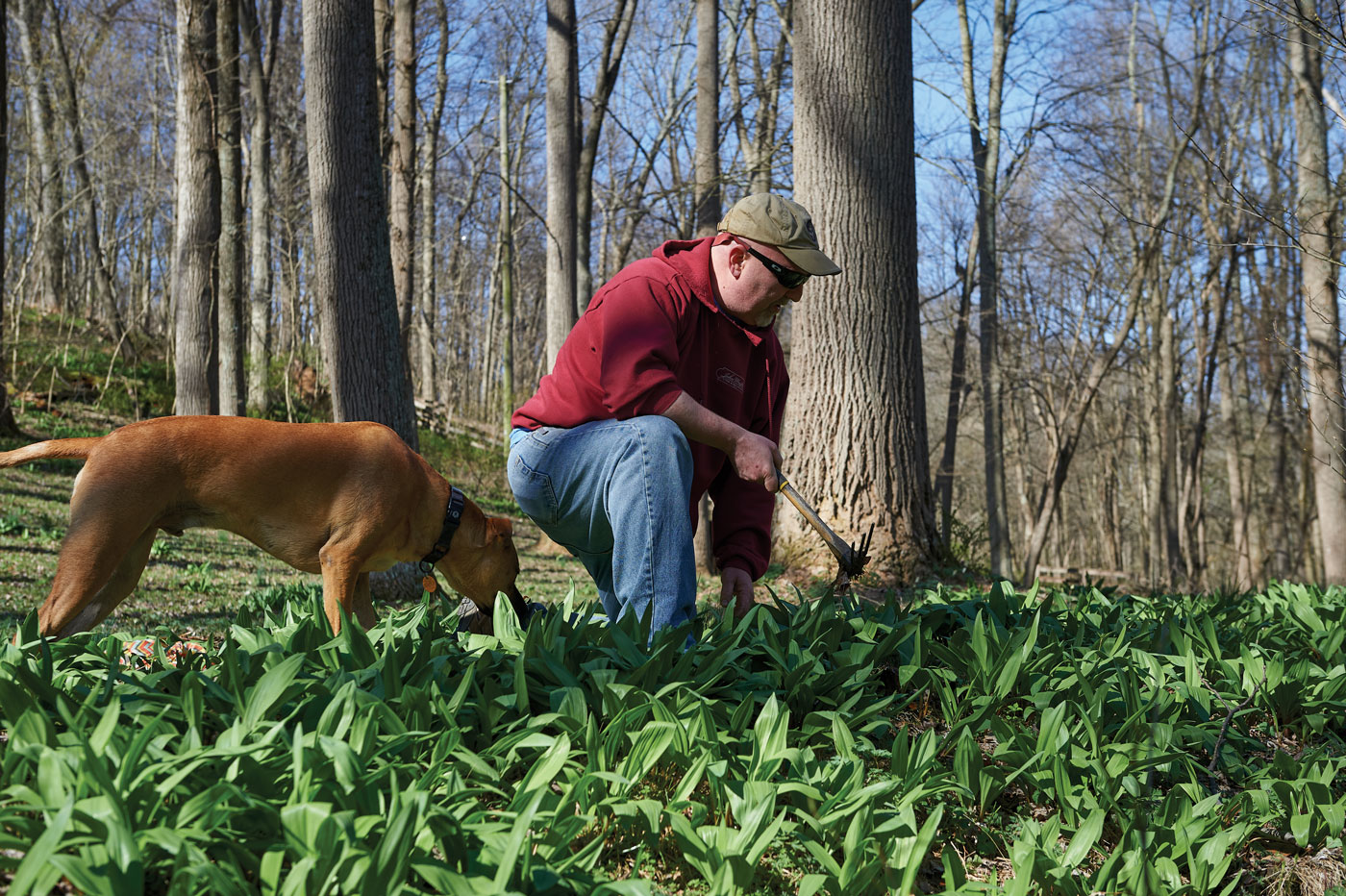
A massive, Wrightsville-area ramp patch conserved in part with the John Wright Restaurant, is located on private land. Locating a patch of ramps filling the area of a square yard is typically considered a success.
The opportunity to add ramps to the menu arose roughly seven years ago when guests questioned Jim about his familiarity with ramps and if he knew what to do with them. One of the guests explained, “I hear I have a gold mine of ramps.” As it turned out, the guests’ property is home to a ramp patch they had been mowing over for 25 years. “Every year when we run a ramps special, we’ll invite them down,” says Jim. “I give them purée, as much as they want. I taught them a few dishes to impress their friends. These guys know that I really care. For us, it’s community-to-table.”
Going In Blind
Visiting this acclaimed ramp patch took more than a year of conversations and planning before Jim would eventually agree to take me along on a foraging trip. It was decided that I would have to go in blindfolded. Spared from knowing the location of their ramp patch, this protected the source and I’d be freed of inquiries on how to get there (so don’t ask!). In the spring of 2021, I narrowly missed the first opportunity after uncommonly warm weather literally steamed the ramps in the ground. The damp soil and jarring heat turned the ramps yellow overnight, abruptly ending the foraging season at a third of its usual duration of six to eight weeks. Larger harvests come at the end of the season, leaving yields low and so, my foraging trip had to wait another year.
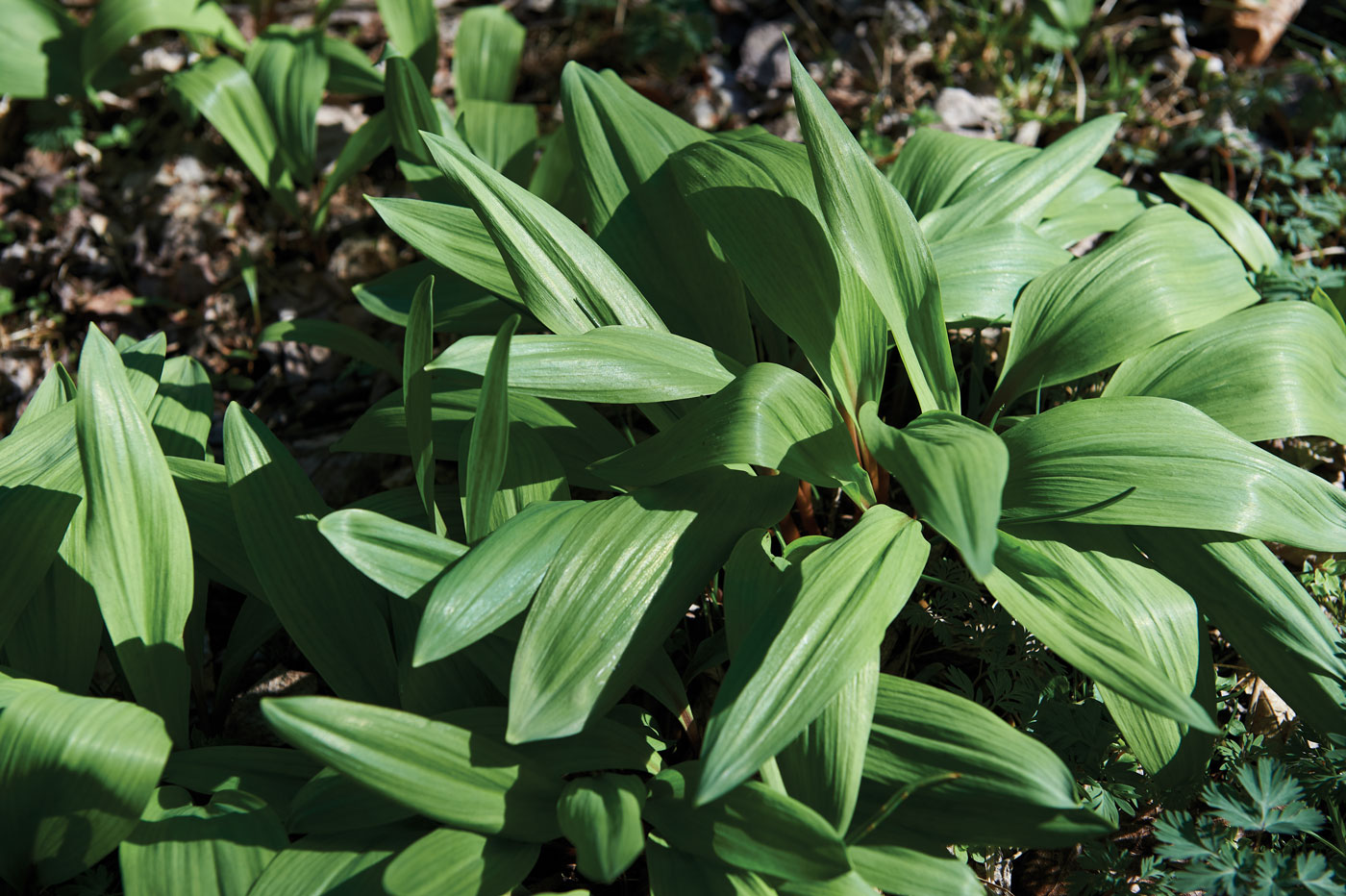
Healthy wild ramps display broad leaves that grow to about 4-inches wide. Preferring cool, damp conditions, ramp leaves develop in early spring and wilt in the warmth of late spring.
In April of 2022, the day finally arrived. It was a picturesque spring morning at the restaurant that awards guests with stunning views of the Susquehanna River. Nature roused from its annual slumber beneath clear skies, as the warm sun fended off the cool, brisk air. We met outside the restaurant, where I was greeted by Jim and his dog, Zeke (Ezekiel), who was every bit as excited about our expedition. “What every forager needs is a good dog who wants to go with them,” says Jim. “He knows. He knew the season was coming,” he says of Zeke sensing something special was in store that morning. As Jim gathered his foraging tools, Zeke and I settled into the front of his truck. “We’re going harvesting, not foraging,” says Jim with a lofty grin. Powering off my phone to disable GPS, I pulled my baseball hat over my eyes and our adventure began.
The Harvest
Arriving at our undisclosed location, we found ourselves surrounded by ramp patches. “Just wait,” Jim exclaims. “We’re not even there yet!” Even if someone had no idea what ramps look like, their presence is alerted by your nose. The air offered fresh scents of spring, laden with robust notes of sweet onions or perhaps garlic. It was a familiar smell, yet somehow new. We walked a short distance and Jim’s grandiose claims materialized. A dense swath of green leaves filled the wooded hillside. I started to question if a camera could capture the massive scale of this ramp “patch.”
Like Jim, I soon viewed this place as special. He understood the resource that grew before us, the importance of growing and protecting the patch by limiting harvest to sustainable, though still incredible, volumes. “We treat it like conservationists,” he says, explaining that by harvesting 100 pounds of ramps, John Wright’s chefs can produce 15 gallons of purée.
Jim is the right person to utilize this patch. He respects it and the landowners, cherishes it, shares it and even utilizes it to foster the local community. I suspect that 25 years of mowing over the patch and not harvesting from it made it what it is today, since the lawnmower blades helped to disperse seeds and force new growth. Jim has essentially taken that development a step further by bringing the flavor of ramps to the community through the John Wright Restaurant in a sustainable, easily attainable way.
Slow and Vulnerable
While ramps are a perennial plant returning each year, they are incredibly slow to propagate. This is the reason foraging must be sustainable or else ramp patches will disappear. Ramps multiply in one of two ways: splitting bulbs in the soil or germinating seeds dropped later in the year. According to Dr. Eric Burkhart, program director at Shaver’s Creek Environmental Center and associate teaching professor at Penn State College of Agricultural Sciences, it can take three to five years until the seed turns into a bulb, creating a conservation issue. In the wild, if each forager harvests 10% of a patch, in no time at all it will become depleted.
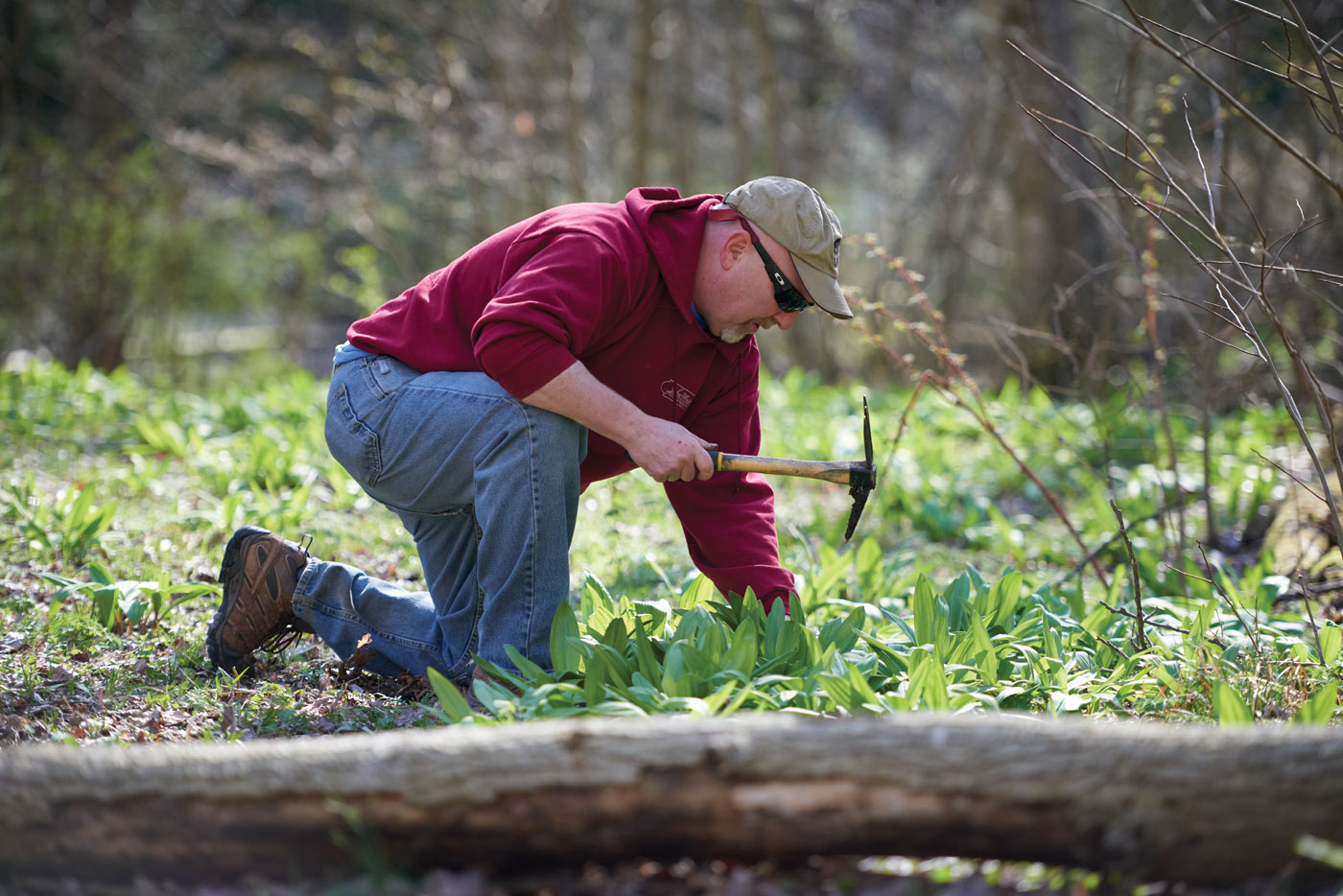
Jim uses a pick to harvest, not forage, ramps for use in menu items and products sold at the John Wright Restaurant.
Because the land-use legacy throughout Pennsylvania has changed often over the past 300 years, ramps have been removed. As lowland areas were cleared for agriculture, they became scarce. “People are starting to chip in to move plants around,” says Dr. Burkhart. Once considered a lower-class food due to the smell, “We’ve gone from rags to riches when it comes to ramps,” he notes.
Ramp Foraging Tips
Depending on the region and weather, ramps can be ready to forage anywhere from the end of March into early- or mid-April. Waiting as little as four weeks to harvest in May will require less than half as many plants to produce an identical volume of smaller, less mature ramps. This can make all the difference in terms of sustainability and even flavor, as it’s more developed in mature plants.
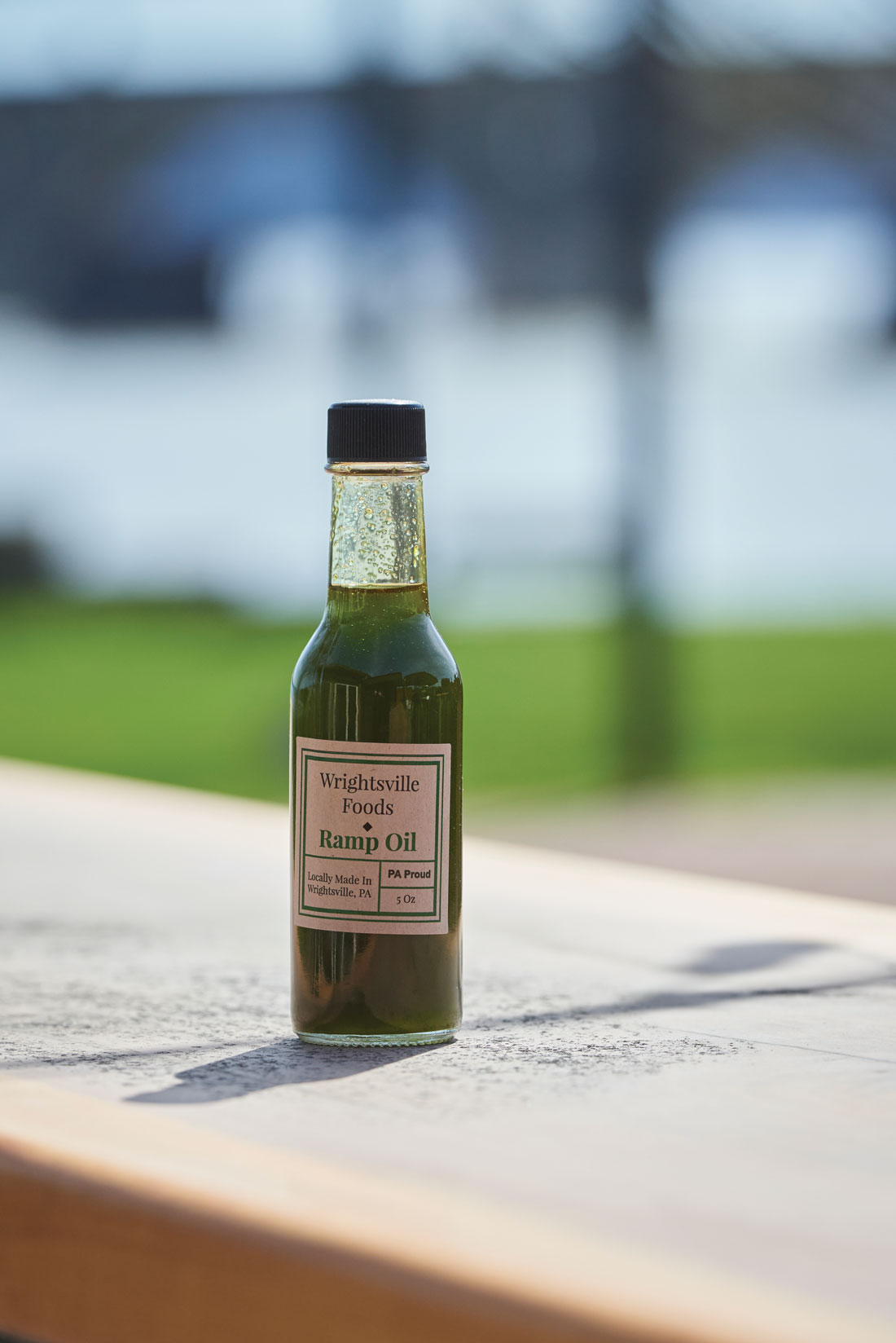
WrightsvilleFoods Ramp Oil is made and bottled in the kitchen of the John Wright Restaurant. Concentrating and preserving the flavor of ramps extends the season well-beyond springtime and across many plates.
When harvesting, select only the most mature ramps (with three large leaves) on plants that have a seed stump from the previous year. Mature plants should be surrounded by smaller seedlings, which can be moved to start new patches if replanted quickly. In commercial operations, ramps are harvested from rotating or gridded areas.
Some advocates encourage only harvesting the leaves and leaving the bulbs in place. In any case, harvesting must be sparse, not done in groups or patches, while trying to leave the soil undisturbed to keep weeds down. Think to cull, not clear. Harvesting, not destroying.
If you’d like to forage for ramps, start by looking for them on shaded, northeast-facing banks. Their stalks can be red or green, usually with three and sometimes four leaves. Ramps can tolerate full sun if there’s enough moisture nearby to stay hydrated. They prefer damp soil rich in calcium and low in acidity. Nearby trees that thrive on water sources can be clues to finding them; they include sugar maple, tulip poplar and slippery elm. Carry a soil or garden knife; I prefer the Japanese-style hori hori knife. Also carry a drain spade to tilt the soil and carefully pry ramps out of the ground. Remember to pat down the ramps you don’t intend to harvest.
Storage and Cooking
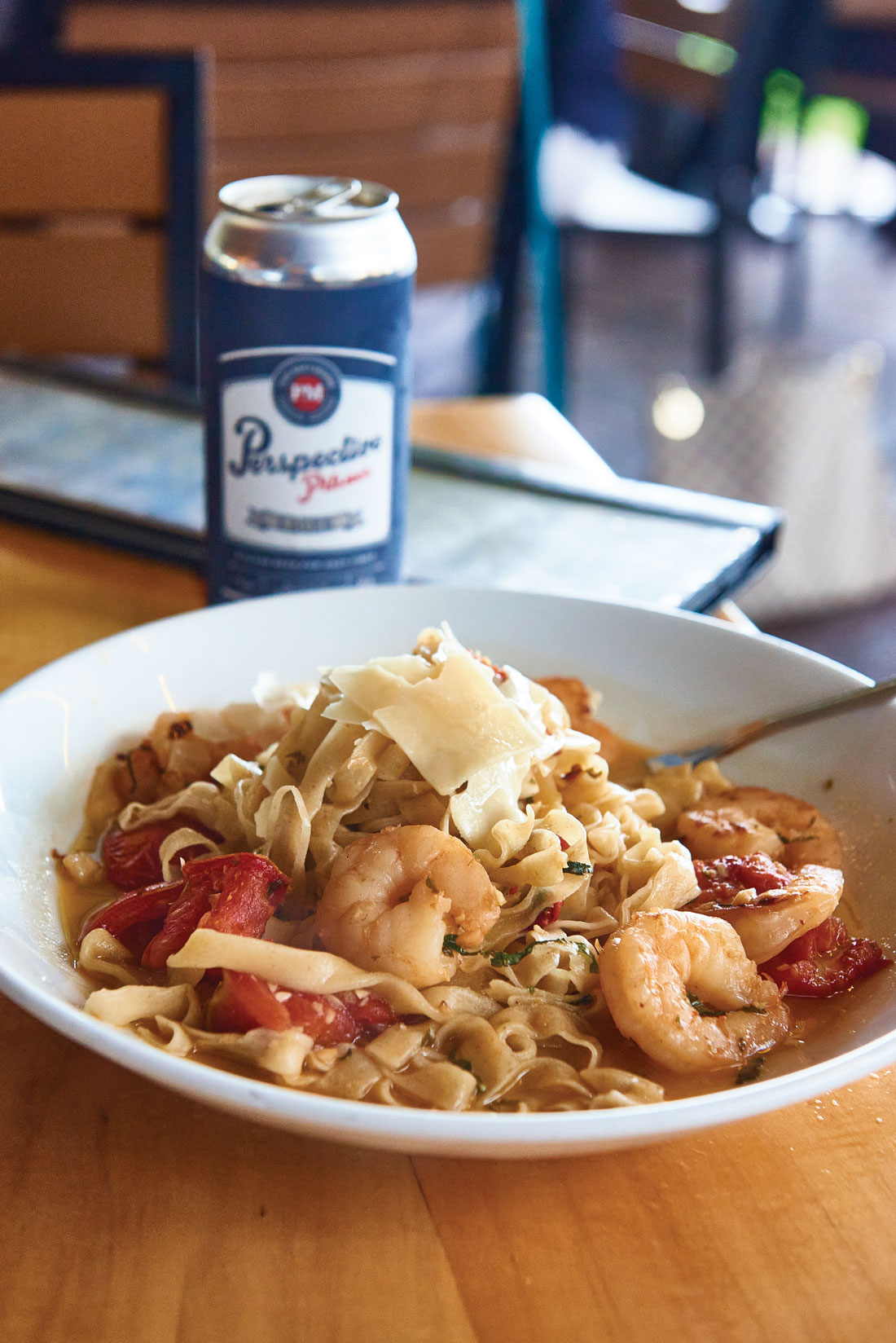
John Wright Restaurant’s Rampi Scampi is anything but bashful. The tangy bite of foraged ramps stands out with the tooth of the al dente pasta, sweet shrimp, silky stewed tomatoes and thin slices of parmesan cheese. It’s served with Pour Man’s Brewing Company’s Perspective Pilsner.
Bulbs will last up to three months in cold storage, while leaves will start to wither and yellow in a matter of days (store them in a Mason jar with a little cool water to keep moisture in the stems).
Ramps, which are high in Vitamin C, can be fermented and pickled. Fresh ramps can be sautéed in butter with mushrooms or pasta. They can also be stir-fried or used to create pesto and flavored butter. Dried bulbs can be ground into powder and used in place of garlic powder or salt. Ramp oil purée preserves and extends the availability of ramps throughout the year while adding pungent flavor in smaller amounts across many dishes, including stews, eggs, pizza and bread. The possibilities are endless!





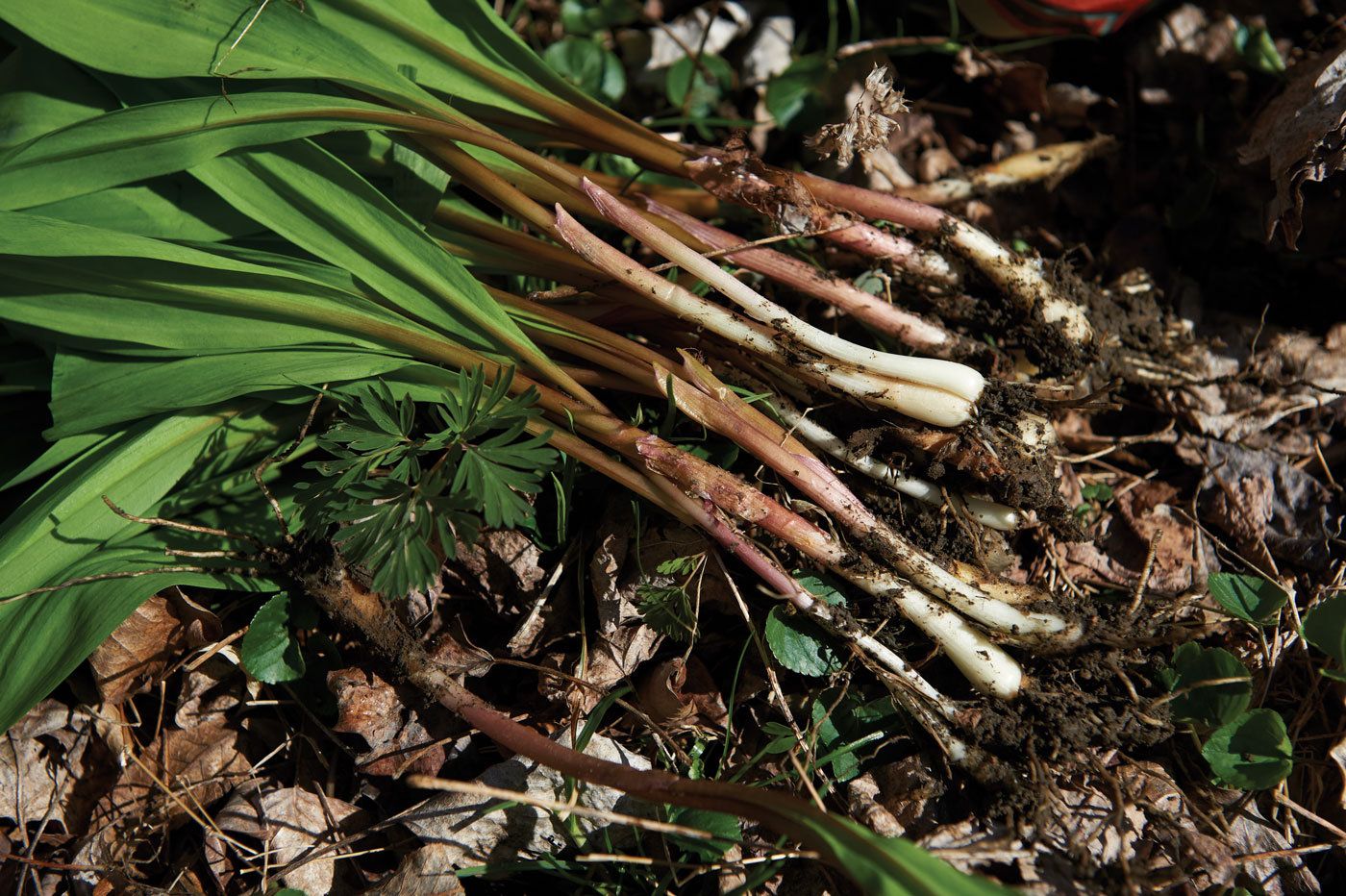
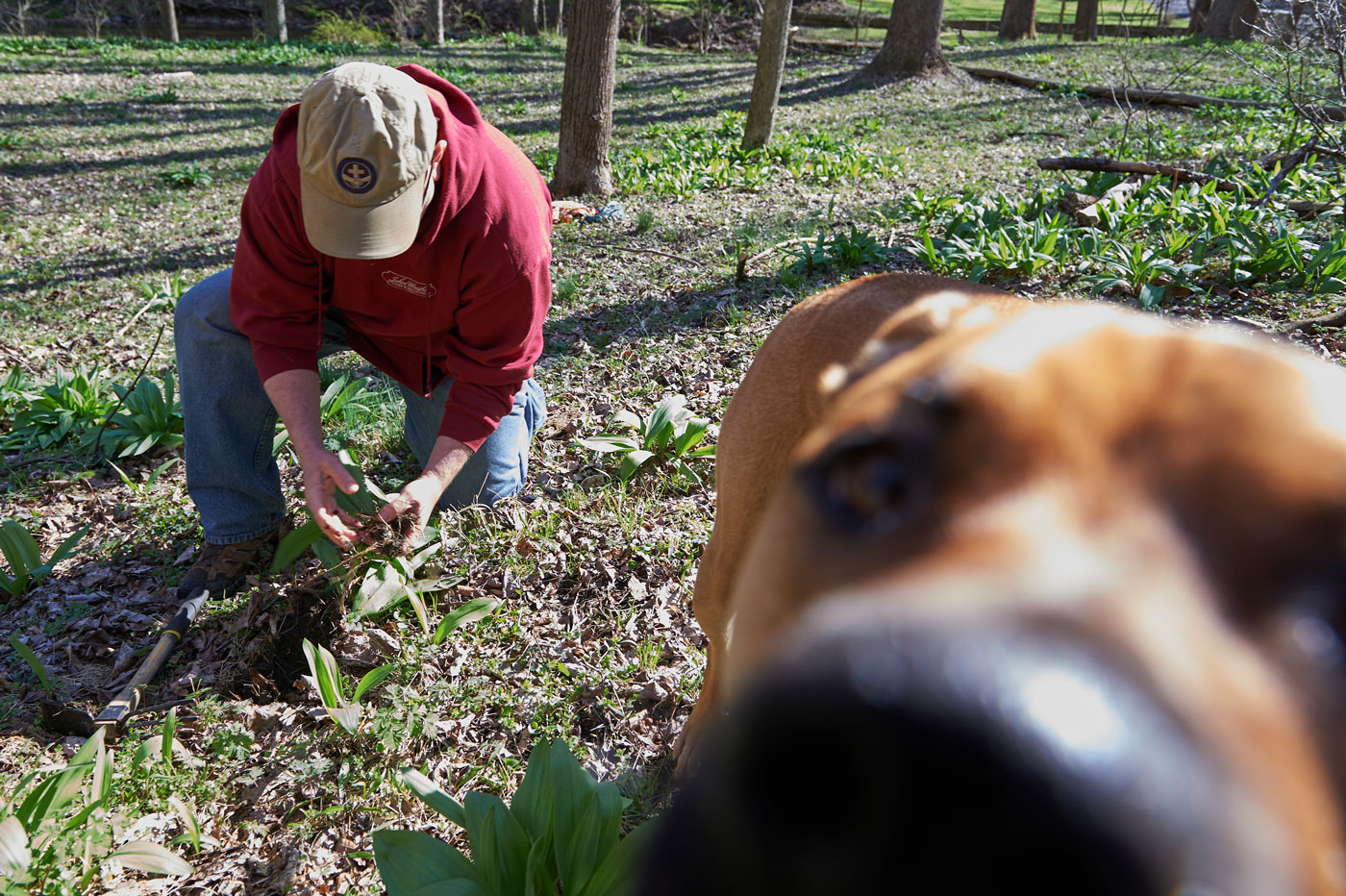
SHARE
PRINT